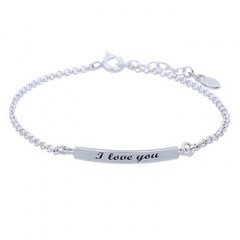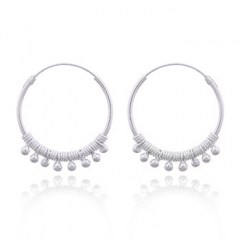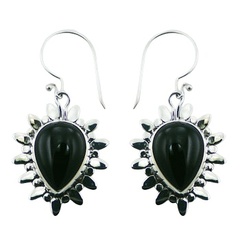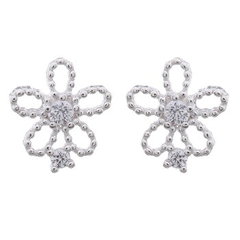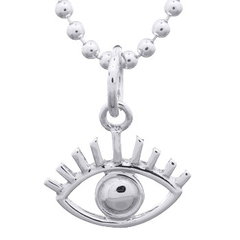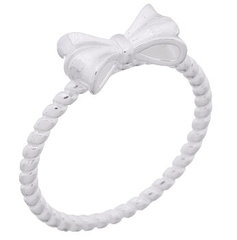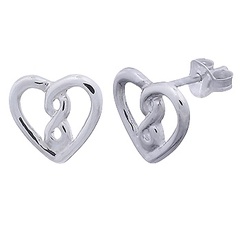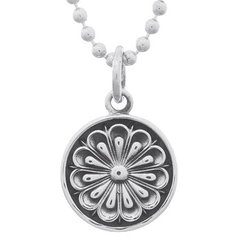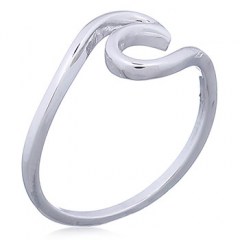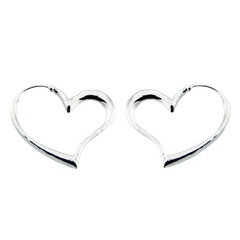No one knows exactly when the vine was wrapped around the wrist for the first time, but the bracelets as decorative pieces have been worn for many centuries. Thousands of years have passed before bracelets, both handmade and created by huge jewelry brands, came to be our favorite pieces of jewelry today. Let's dig into the history of these marvelous embellishments!
Prehistoric period
In the Paleolithic era, most jewelry pieces were made of mammoth tusks. A bracelet became a decoration when it was made of metal somewhere in the Bronze Age. Especially interesting items were worn by the ancient Greeks and Romans.
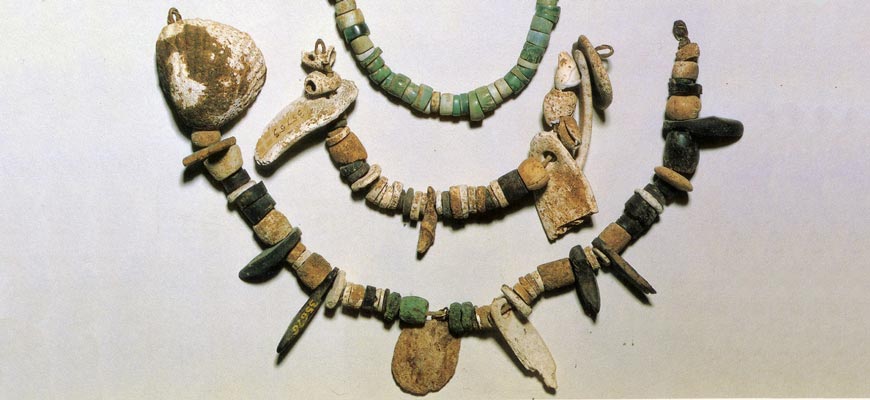
In the middle ages, the fashion for bracelets took a pause as women's clothing had long sleeves. However, in the Renaissance time the fashion for short sleeves came back and made these accessories trendy again.
Good to know that the bracelet originally was considered as a female and male decoration; for instance, for the German soldiers it was a symbol of valor. In the old days, wearing bracelets on the forearm was allowed only for kings, princes, and their wives. The lower class could adorn their wrists.
In 2010, Altai archaeologists discovered the oldest female bracelet in the Denisova Cave; it was allegedly 40-50 thousand years old (Paleolithic period). There was a special hole in the ornament where the rope was supposedly passed through.
“We found out that the object lived a long life, that it was repaired and restored several times. The bracelet was made of chlorite. In those places where it was found, archaeologists and geologists did not find sources of this material. To make this item a person either imported raw materials from afar, or it was handmade in some other place. This indicates that people migrated all the time, picked special rather than random raw materials for their jewelry and had a good artistic taste. When light hits a bracelet, it gets a greenish tint. For sure, it had a great value at that time and it is unlikely belonged to an ordinary member of that society. ”
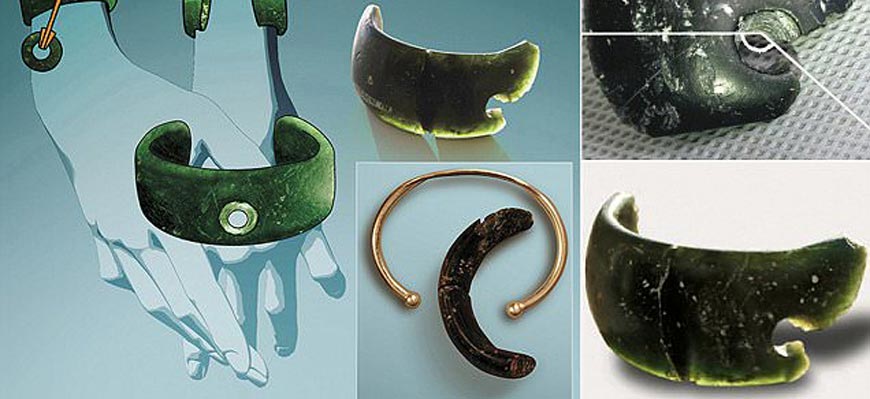
During the Neolithic period men overtightened their wrists with a strip of skin, so that the hand could stand a heavy load when throwing a spear. This could help to avoid a number of injuries. Currently this technology is used in athletics and weightlifting, or during wrestling competitions.
In addition to practical use of the bracelet, it was also utilized by the cavemen as a talisman. The object was made of mammoth tusks, animal teeth, wood, ropes, minerals, stones, etc. Cavemen endowed bracelets with mystical properties and used them in rituals, driven off evil spirits.
Ancient time bracelets
In the antique period, bracelets became widespread among men and women in ancient Egypt, Rome, India, Greece, and Africa. With the development of metallurgy people began to make jewelry first from copper, and then from bronze, gold, and silver. Romans depicted snakes, lions, coats of arms, and branching ornaments on their bracelets, while the Greeks preferred leaves, gods, etc. Ancient Egyptians supposedly engraved ornaments with images of supernatural creatures on their jewelry.
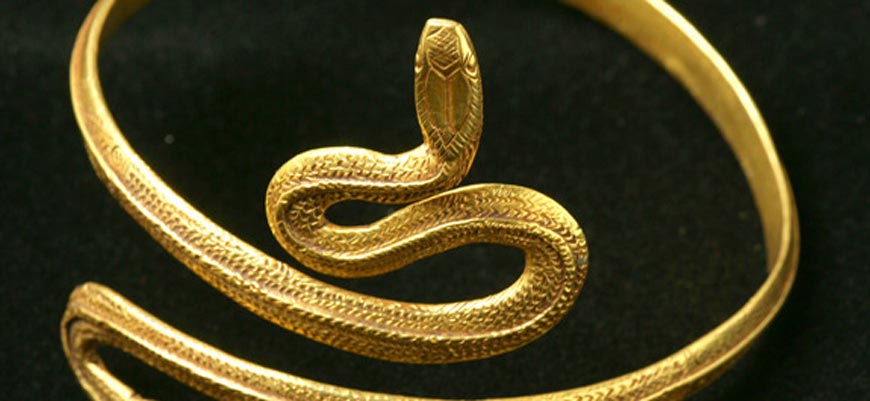
As a rule, the pattern and color of the bracelet were combined with the whole ensemble of clothes. Jewelry emphasized the owner’s power. The upper classes' bracelets were made of expensive metals and stones, as well as colored glass.
Kings and priests could wear one or several narrow and wide bracelets on the wrists and forearms. Egyptians used accessories as an ankle-leg decoration as well. Warriors had nominal bracelets, which were symbols of courage, honor and courage for them. Lower classes made ornaments of textiles and stones, usually worn on the wrist.
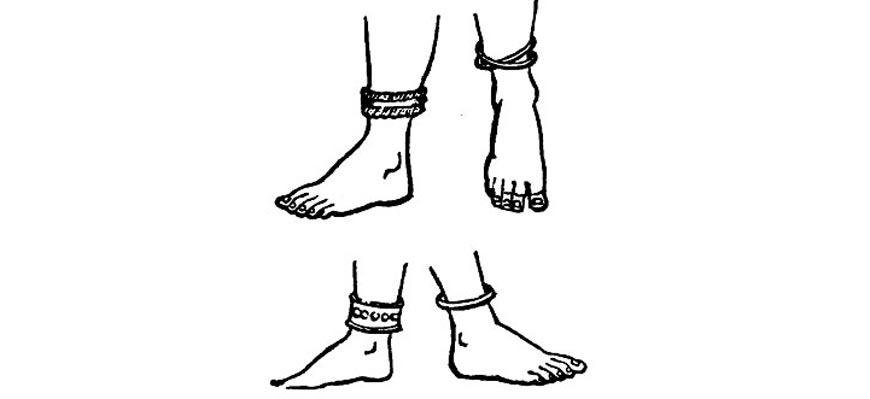
The Medieval period
In Russia in the 9th-12th centuries the bracelets belonging to the higher class representatives were made of gold or silver and were decorated with blackening. Among citizens – the bracelets were made of glass, and among the peasants - from copper, leather, and cloth. The Slavs called bracelets "the hoops" (as they were wrapped around the arm). They were worn on the left or the right hand, sometimes on both and several hands at once. They could be worn on the wrist or forearm, on top of or under the sleeve.
On the jewelry found by archaeologists there are distinguishable images of mythical animals and birds. Bracelets also depicted various plots, for example, musicians playing instruments, girls performing dances, etc.
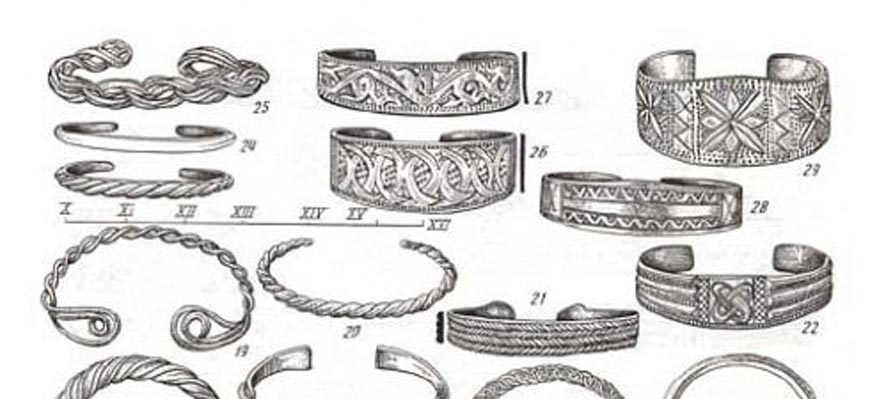
Fashion for some special types of bracelets was spread throughout Europe from the South, namely, Byzantium. For example, bracelets with ornaments from the drota with the ends, imitating a knotted knot. Around the X century they became widespread in Scandinavia, Finland and the Baltic States.
Bracelets the ends of which imitated animal head made the topic for heated discussions among archeologists. Some scientists believe that these jewelry pieces were brought from Byzantium, but others believe that in the X — XII centuries Slavic jewelers were already highly skilled craftsmen and could easily create bracelets by their own design, imitating ancient antique patterns.
Warriors wore bracers and leggings (part of the armor that protects the hands from the elbow to the wrist and the legs from the knee to the ankle), consisting of metal plates. In the Middle Ages long sleeves became fashionable, resulting in people from some European countries stopping wearing bracelets.
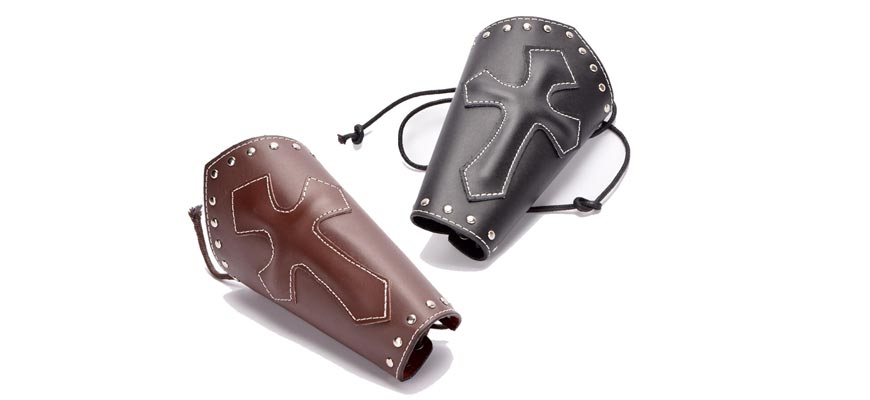
Fashion trends were followed by the Mediterranean citizens who wore cuffs. Those decorative items made of leather and various metals were a part of the Greek soldiers’ uniform, which was later spread to Roman soldiers as well.
That was the time when this jewelry type gained popularity in Europe, but moving into the Middle Ages made this fashion stay in the background for many centuries until it reappeared in the 1700s. Ribbons or bangles forming bracelets became a common type of wrist embellishment during the 18th century and the fashion continued to evolve during the 19th when chain bracelets started to be used for style. Victorian era gave an impulse to the development of bracelets complimented with charms.
Renaissance and New Time
In the Renaissance times, bracelets together with fashion for shortened sleeves again became an integral part of the European wardrobe. There were plenty of various aspects to it.
In the 16th century French jewelers began to create bracelets coated with colored enamel. The accessory was encrusted with precious stones and pearls. Men's and women's bracelets were decorated with carved patterns depicting plants, animals, birds, etc.
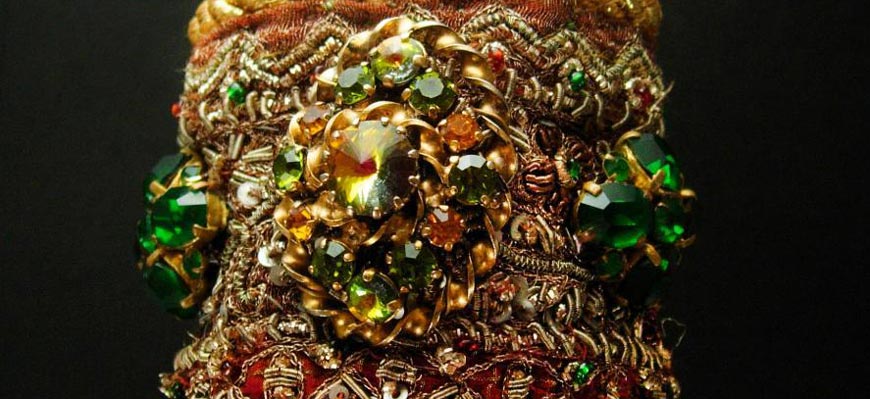
An accessory imitating the image of a squirrel dating from the 14th — 15th centuries is very well known. Knights wore bracelets as a sign of love, receiving them from the ladies of their heart and putting them on left hand.
In the 16th century, handcuffs for prisoners appeared in England. They consisted of two bracelets connected by a short chain. The handcuffs were made of metal; such bracelets had a movable element fixed in one position with the help of a latch. Handcuffs were unlocked and locked with a key, although some models were locked by pressing the latch.
In the XVIII century closed clothes came into fashion. Wide bracelets were sewed into clothes in the manner of a cuff (predecessors of modern cuff bracelets). Chain bracelets appeared and were worn over the sleeves. During the reign of Alexander I the wearing of bracelets and chains at the ankles became fashionable.
XIX century
In the 19th century, French jewelers began making coral bracelets. In the Victorian era, accessories were worn in pairs; at that time, means of decoration have become meaningful. It could have be mystical values (figures, attributes of superstition) as well as a portrait of a beloved person.
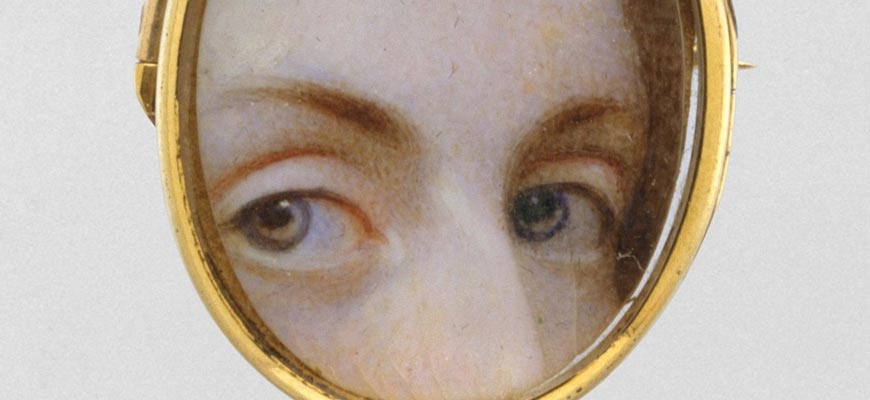
Engravings gained popularity as well. Bracelets were decorated with the form of an acrostic where the first letter of the stones determined various feelings: friendship, love, affection, etc. Double bracelets consisting of two rings connected to a chain with a lock in the form of a heart became famous and were worn on one hand closer to the elbow.
XX century
In the first half of the 20th century bracelets obtained new forms: square, triangular, trapezoidal, etc. Designers began experimenting with materials (plastic, leather, silicone, glass, fresh flowers), as well as trying out various jewelry combinations.
In the 1930s the jeweler Fulco di Verdura created a bracelet for Coco Chanel in the form of a one-piece silver ring covered with creamy white enamel. The decoration was given an extra touch with the help of a Maltese cross inlaid with precious stones.
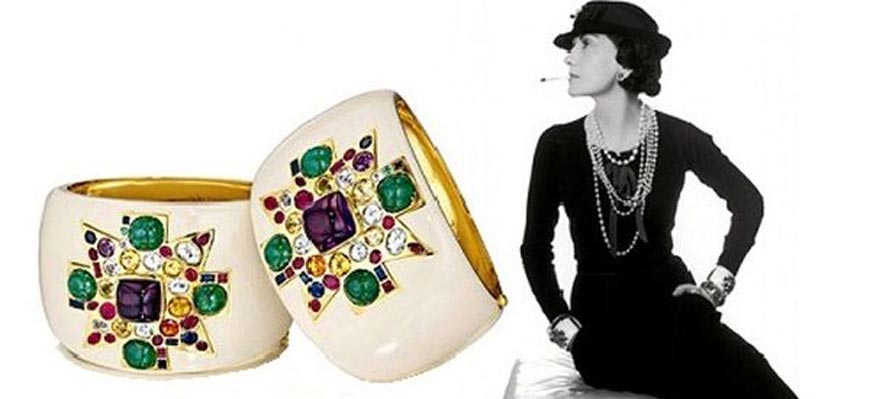
In the 50s, designers of the jewelry house Van Cleef & Arpels made a bracelet with the image of honeycombs. The jewelry looked as a wide ribbon that consisted of several gold bracelets from the fashion house Christian Dior (1947) with hexagonal plates. Each of them was depicted with a star decorated with a large stone - a ruby or a diamond.
The clasp had the shape of a curl and was decorated with stones in invisible frames ("Serti Mysterieux"). This form of insertion of gems was developed and patented by Van Cleef and his partner Arpels in 1933. The secret was that the stones were tightly - one after the other - strung on the thinnest rails made of gold or platinum. At the same time the surface of the gems looked absolutely flat.
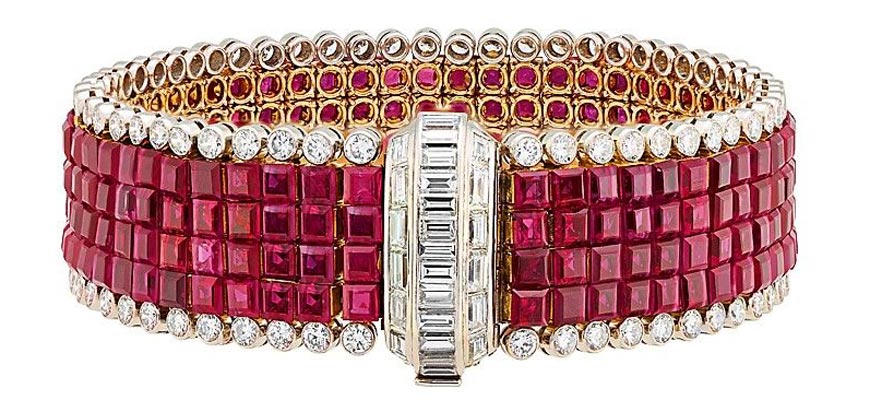
In the 50s, bracelets made of gilded threads appeared. In 1952, jewelers of Cartier made a the Duchess of Windsor a panther bracelet made of onyx and diamonds. In 2011, Sotheby’s London auction house sold this jewelry for $ 7 million.
In 1954, Van Cleef and Arpel made a Zip ornament for the Duchess of Windsor. When the zipper was in the closed position the accessory was a bracelet, while in the open position it turned into a necklace.
In the 60s, bracelets made of beads, threads, and ropes were extremely popular. Braided jewelry was characteristic of the hippie style and was a symbol of the legendary movement.

In 1982, the globally known Pandora company released the Pandora Style bracelet. The decoration comprised individual beads and pendants strung on a cord. The buyer could choose the elements for the bracelet.
In 1987, thin diamond jewelry began to be called tennis bracelets. The name of the product was due to the athlete Chris Evert. The American tennis player interrupted the game at the US Open because a diamond bracelet fell from her wrist. At the press conference Chris Evert explained that she could not but stop the match having lost her “tennis bracelet”.
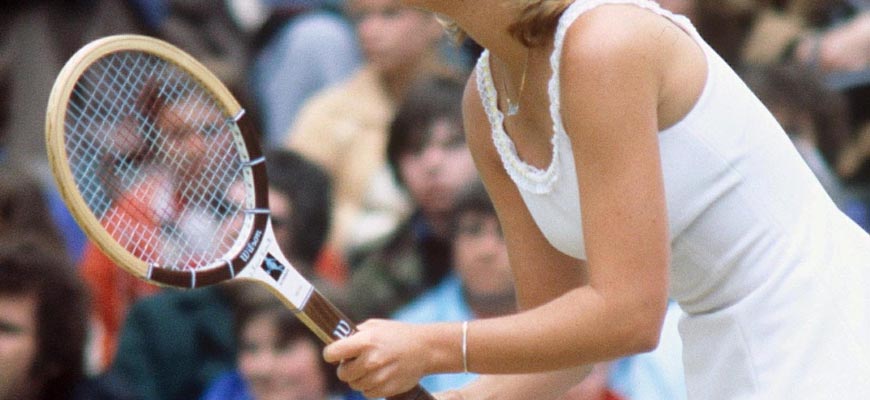
XXI century
In the fall-winter 2010-2011 season designers of Van Cleef & Arpels created a women's jewelry collection made of white and pink gold. The product consists of five thin closed and open bracelets, fastened together. In the same season, Thomas Mayer's Bottega Veneta presented wide open bracelets depicting a rhinoceros beetle in a new women's collection.
In 2012 jeweler Jason Arasheben created a bracelet for the winner of the WSOP poker tournament. The product was decorated with diamonds weighing over 35 carats. 170 grams of 14-carat gold were utilized to create the bracelet.
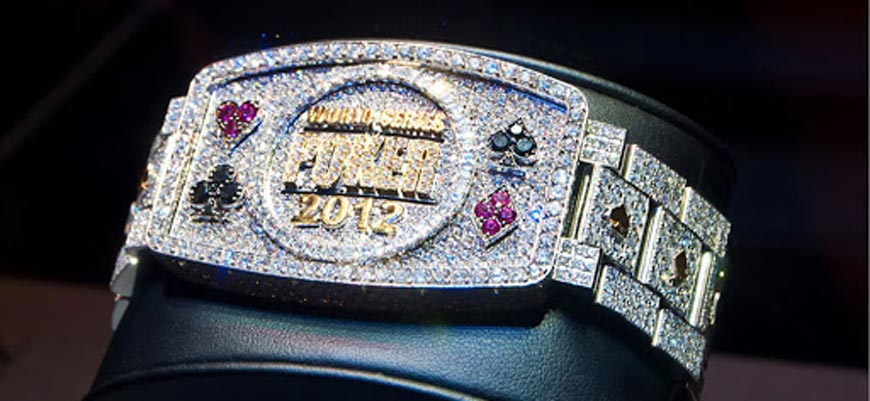
In the spring-summer 2012 season Domenico Dolce and Stefano Gabbana presented the men's braided khaki bracelets on the latch. The metal tag of the accessory featured the Dolce & Gabbana brand's logo. In her Autumn-Winter 2012-2013 women's collection, Dorothea Schumacher presented chain bracelets with a four-leaf clover decor.
Bracelets are regularly released by such brands as Bvlgari, Cartier, Tiffany & Co, Van Cleef & Arpels, Giorgio Armani, Gucci, Dolce & Gabbana, Chanel, Lanvin, Blumarine, H & M, etc. Modern fashion for bracelets is first of all a mixture of styles. Now it is also very fashionable to wear a large number of bracelets on hand.
If earlier it was believed that bracelets and watches should not be worn together, now this is beyond trendy. Fashion is changing but the popularity of the favorite female accessory remains the same!

